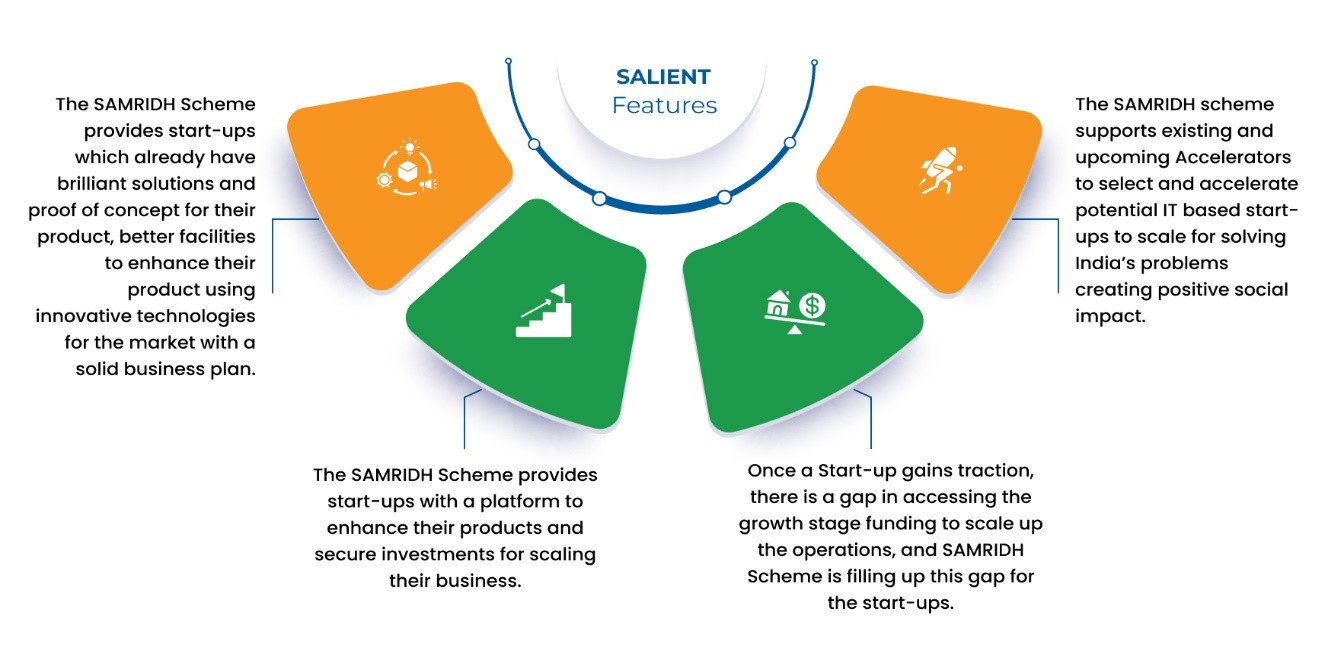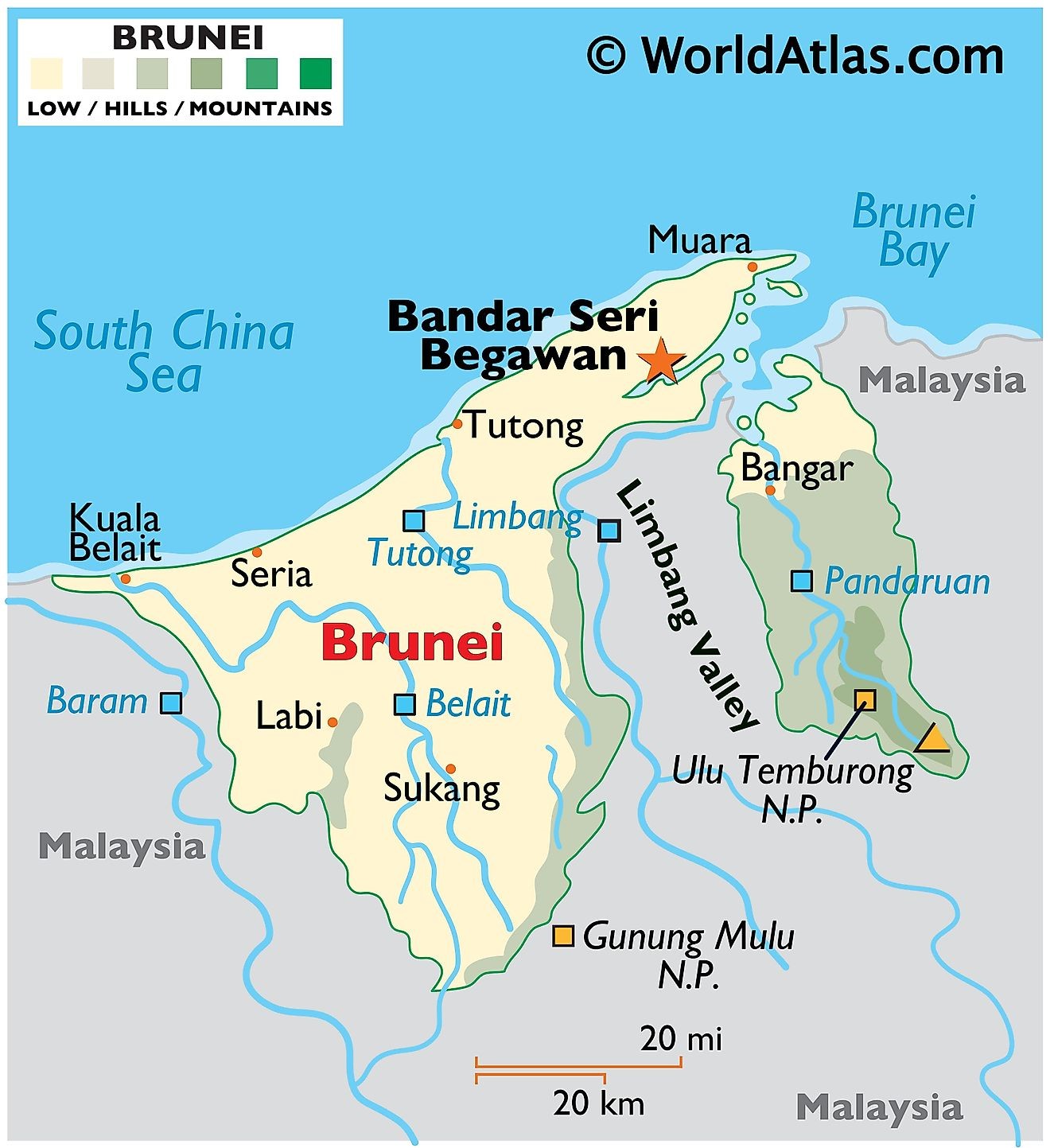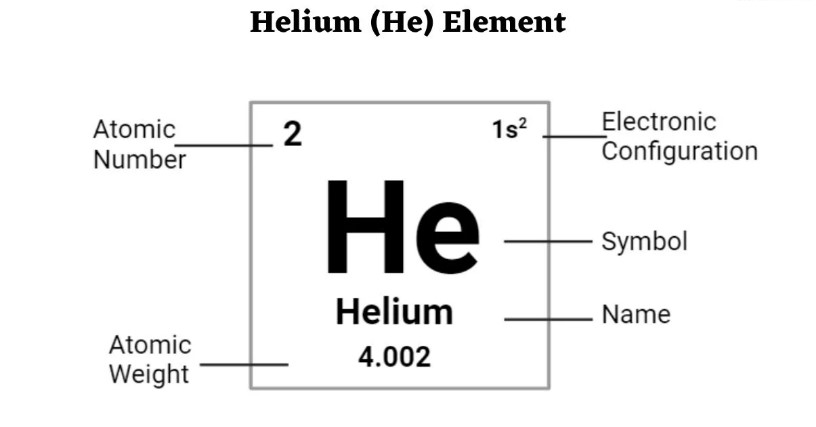SAMRIDH Scheme
The Secretary of the Ministry of Electronics and Information Technology launches 2nd Cohort of SAMRIDH Scheme recently.
|
Startup accelerators vs Incubators
|
- These programs are for startups that are already running and are looking to scale quickly.
|
- These organizations help entrepreneurs develop their business ideas and bring them to market.
|
- They offer mentorship, capital, and connections to investors and business partners.
|
- They focus on building the foundational elements of a startup, such as market research, product development, and business model validation.
|
- Accelerators typically last one to six months and are cohort-based, with a public pitch event or demo day at the end.
|
- Incubators can provide support for a longer period of time, and don't have a specific duration attached to the transformation.
|
- SAMRIDH - Startup Accelerators of MeitY for Product Innovation, Development and Growth.
- It is a flagship programme for startups acceleration under National Policy on Software Products - 2019.
- Launched in - August 2021.
- Aim - The program aims to support 300 tech Start-Ups in 3-year duration with cohort size of 5-10 Start-Ups.
- Implemented by - MeitY Start-up Hub (MSH), Digital India Corporation (DIC).
- Funding - One-to-one matching funding support of up to Rs.40 lakh.
- In the 1st round of cohort, 22 Accelerators spread across 12 states are supporting 175 startups, selected through a multilevel screening process.
- In the 2nd round it will support 125 startups through potential accelerators so as to achieve the target of nurturing 300 startups.
- Eligibility - Have been in the business of incubation for more than 3 years and supported more than 50 start-ups of which at least 10 have received non-public investment.
- Accelerators - Registered as section 8 company under companies act 2013/societies registered under Societies Registration Act (Not-for-profit).
- The Accelerator should have an experience of running startup program cohorts with activities.
- Features

References
- PIB | SAMRIDH Scheme
- MeitY | Samridh Scheme
Vertical Fiscal Imbalance
The 15th Finance Commission had noted that India has had a larger, and rising, vertical imbalance than most other federations.
Fiscal imbalance
- It occurs when there is a mismatch between a government's future debt obligations and future income streams.
A fiscal deficit is the shortfall in a country's revenue stream compared to its spending.
- Types - Vertical and horizontal fiscal imbalance are the two types of imbalance that can impact a government's expenditures and revenues.
Horizontal fiscal imbalance
- It occurs when revenues do not match expenditures for different regions of the country.
Vertical fiscal imbalance
- It occurs when revenues do not match expenditures for different government levels.
- A vertical fiscal imbalance is a structural issue that can be resolved if revenue and expenditure responsibilities can be reassigned.
- Constitutional provision - Article 280 addresses the issue of "vertical fiscal imbalance" by establishing a Finance Commission, tasked with recommending the distribution of tax revenues between the central government and state governments.
- Finance commission reviews the fiscal conditions of the Centre and states from time to time and suggests resource transfer from the Centre to the states.
- For the transfer of central resources, the constitution itself points out what tax resources of the Centre have to be shared with the states.
- Divisible pool - These tax sources of the Centre that must be shared with the states is known as the divisible pool.
- The divisible pool consists of all taxes, except surcharges and cess levied for specific purpose, net of collection charges.
|
Status of Vertical Fiscal Imbalance in India
|
- VFI in India is calculated after the devolution of taxes to the States.
- VFI measurement should be at the level of “all States”, and not separately for each State.
- Suggested Ratio = The sum of the Own Revenue Receipts (ORR) and the tax devolution from the Union government for all States / Own Revenue Expenditure (ORE) for all States
- If this ratio is less than 1, it implies that the sum of own revenue receipts and tax devolution of the States is inadequate to meet the ORE of the States.
- If we subtract this ratio from 1, we get the deficit in receipts. It is this deficit that we use as a proxy for VFI after devolution.
- As the 15th Finance Commission noted, States incur 61% of the revenue expenditure but collect only 38% of the revenue receipts.
- The role of the 16th Finance Commission should be to eliminate vertical fiscal imbalance in federal relations.
- Many States have raised the demand that the share of tax devolution from the net proceeds must be fixed at 50% by the 16th Finance Commission.
- They substantiate this demand by pointing to the exclusion from the net proceeds of the substantial amounts of cesses and surcharges, which trims the net proceeds within the gross tax revenue.
|
Reference
The Hindu | What is vertical fiscal imbalance?
Brunei
Modi, 1st Indian Prime Minister to travel to Brunei on a bilateral visit recently said that he was looking forward to strong ties with Brunei.

- The country of Brunei is located along the northern coast of the Borneo Island in Southeast Asia.
- Capital - Bandar Seri Begawan.
- It is situated both in the Northern and Eastern hemispheres of the Earth.
- Bordered by - The South China Sea in the north and on all other sides by Malaysia.
- Brunei is divided into 2 non-contiguous parts by a portion of the Malaysian State of Sarawak.
- Brunei shares its maritime borders with China and Malaysia.
- Bukit Pagon is the highest point in the country along the border with Malaysia in the eastern mountainous region.
- Rivers - Belait, Pandaruan, and Tutong.
- It is a major oil producer in Southeast Asia.
Reference
Times of India | Modi looking forward to strong ties
Earth’s third energy field - Polar Wind
NASA scientists have detected and measured Earth's 3rd energy field using a suborbital rocket as part of the Endurance Mission.
- Ambipolar Electric Field – It is a weak, planet-wide electric field, counteracts gravity and ejects particles into space as fundamental as Earth’s gravity and magnetic fields.
- Although the field is weak, it is significant to Earth as it counters gravity and lifts the skies up.
- Any planet with an atmosphere should have an ambipolar field.
- Scientists theorized this electric field should begin at around 250 kilometers altitude, where atoms in our atmosphere break apart into negatively charged electrons and positively charged ions.
- This electric field is bidirectional, or “ambipolar,” because it works in both directions.
- Ions pull the electrons down with them as they sink with gravity.
- At the same time, electrons lift ions to greater heights as they attempt to escape to space.
- The net effect of the ambipolar field is to extend the height of the atmosphere, lifting some ions high enough to escape with the polar wind.
- First hypothesized more than 60 years ago, the ambipolar electric field is a key driver of the “polar wind,” a steady outflow of charged particles into space that occurs above Earth’s poles.
- Polar wind – It was strangely made up of particles moving at supersonic speeds even though they remained cold, contrary to expectations.
- Hydrogen ions, which are in abundance in the polar wind, are pushed into space by an electric field that is 10.06 times stronger than gravity.
- It was found to push hydrogen ions into space and increase the ionosphere's density by 271%, which helps maintain its density at higher altitudes.
- The field acts like a conveyor belt which lifts the atmospheric particles into space.
Reference
Indian express | Polar Wind
Helium in Rockets
Boeing’s Starliner spacecraft landed uncrewed in a New Mexico desert recently, due to Helium leakage in the rocket system.
- Helium – It is the second most abundant element in the universe after hydrogen.
- It is a colorless and odorless inert gas that does not react with other substances or combust.

- It is the second lightest element after hydrogen.
|
Element Properties
|
|
atomic number
|
2
|
|
atomic weight
|
4.002602
|
|
melting point
|
none
|
|
boiling point
|
−268.9 °C (−452 °F)
|
|
density (1 atm, 0 °C)
|
0.1785 gram/litre
|
|
oxidation state
|
0
|
|
electron configuration
|
1s2
|
- Use of Helium in Rocket – As Helium has a very low boiling point (-268.9° C), it to remain a gas even in super-cold environments.
- Many rocket fuels are stored in that temperature range.
- Helium is used to pressurize fuel tanks, ensuring fuel flows to the rocket’s engines without interruption and for cooling systems.
- As fuel and oxidiser are burned in the rocket’s engines, helium fills the resulting empty space in the tanks, maintaining the overall pressure inside.
- Because it is non-reactive, it can safely mingle with the tanks’ residual contents.
- Leakage Prone – As Helium is small in atomic size and low in molecular weight , its atoms can escape through small gaps or seals in storage tanks and fuel systems.
- Easy to Detect - Because there is very little helium in the Earth’s atmosphere, leaks can be easily detected
- Alternatives - Argon and nitrogen, which are also inert and can sometimes be cheaper.
References
The Hindu | What is helium and why is it used in rockets?


